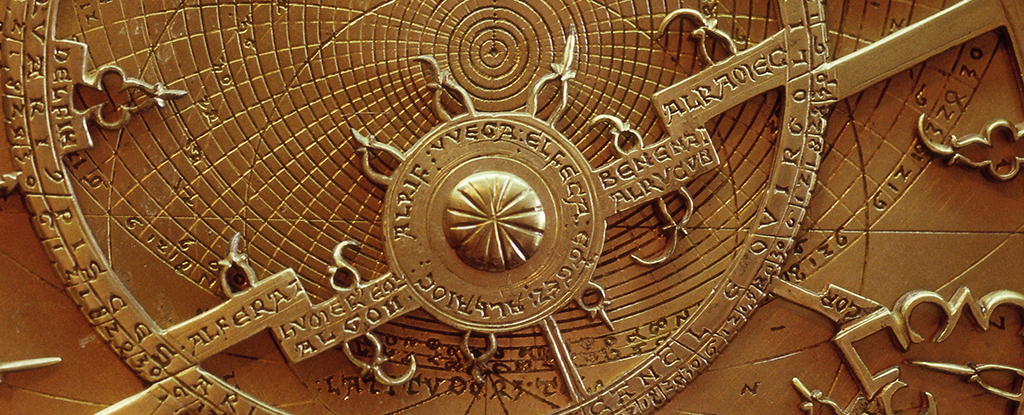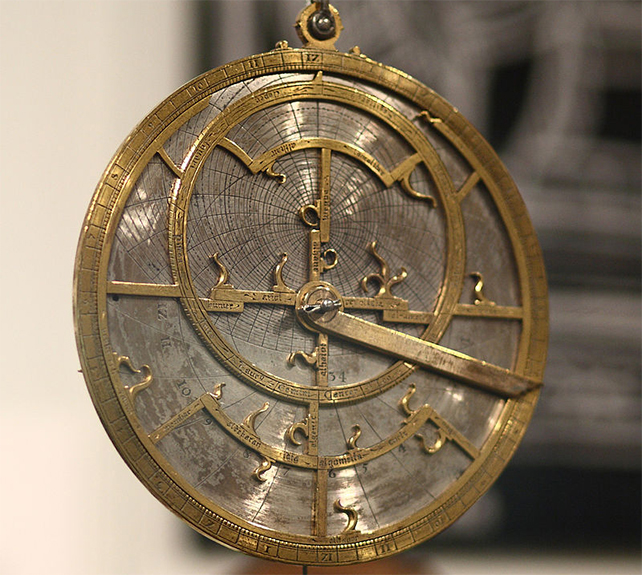
Astrolabes, known for aiding navigation and revered as art pieces, find a new dimension in a recently released paper. Emmanuel Davoust, an astronomer at the Observatories Midi-Pyrenees in Toulouse, France, and an amateur historian, explores an astrolabe’s self-referential ability to reveal its creation year through the star patterns it references.
Beyond their precision and utility in determining a ship’s latitude, astrolabes captivate with their aesthetic allure. Modern collectors are drawn to them, even those crafted using contemporary manufacturing methods.
Dr. Davoust’s analysis, detailed in a recent arXiv paper, focuses on an astrolabe housed in the Musee des Arts precieux Paul-Dupuy, Toulouse. Constructing an astrolabe involves intricate steps, including crafting components like the “rete,” a planar projection of the celestial sphere, and the “mater,” a disc enabling the user to gauge a star’s height over the horizon.
Central to astrolabes are “pointers” aligning with specific stars when held against the sky. The challenge lies in identifying these stars, as they subtly shift positions over centuries due to their slow, continuous movement.
Dr. Davoust ingeniously employed modern technology to date the astrolabe, which lacked clear indicators from its Dominican friar creators. By observing the celestial dance of stars at the end of the pointers, he unraveled a hidden chronological tale encoded in this remarkable astronomical instrument.

Dr. Davoust embarked on a celestial journey, capturing the rete’s image and meticulously determining the coordinates of the 34 pointers on the Toulouse astrolabe. To unveil its temporal secrets, he cross-referenced a star catalog, comparing positions with those on known Latin astrolabes within a specific timeframe.
The detective work focused on the years between 1400 and 1700, with a 50-year interval and examinations aligned with each year’s equinox. Through this rigorous process, the closest match emerged with the equinox of 1550, aligning the referential stars near the pointers, albeit not with absolute precision.
This historical sleuthing showcases the unexpected rewards of cross-disciplinary research. Even the modest revelation of when a now-museum-piece astrolabe was crafted adds a layer of understanding to its impressive legacy.
Read the original article.





